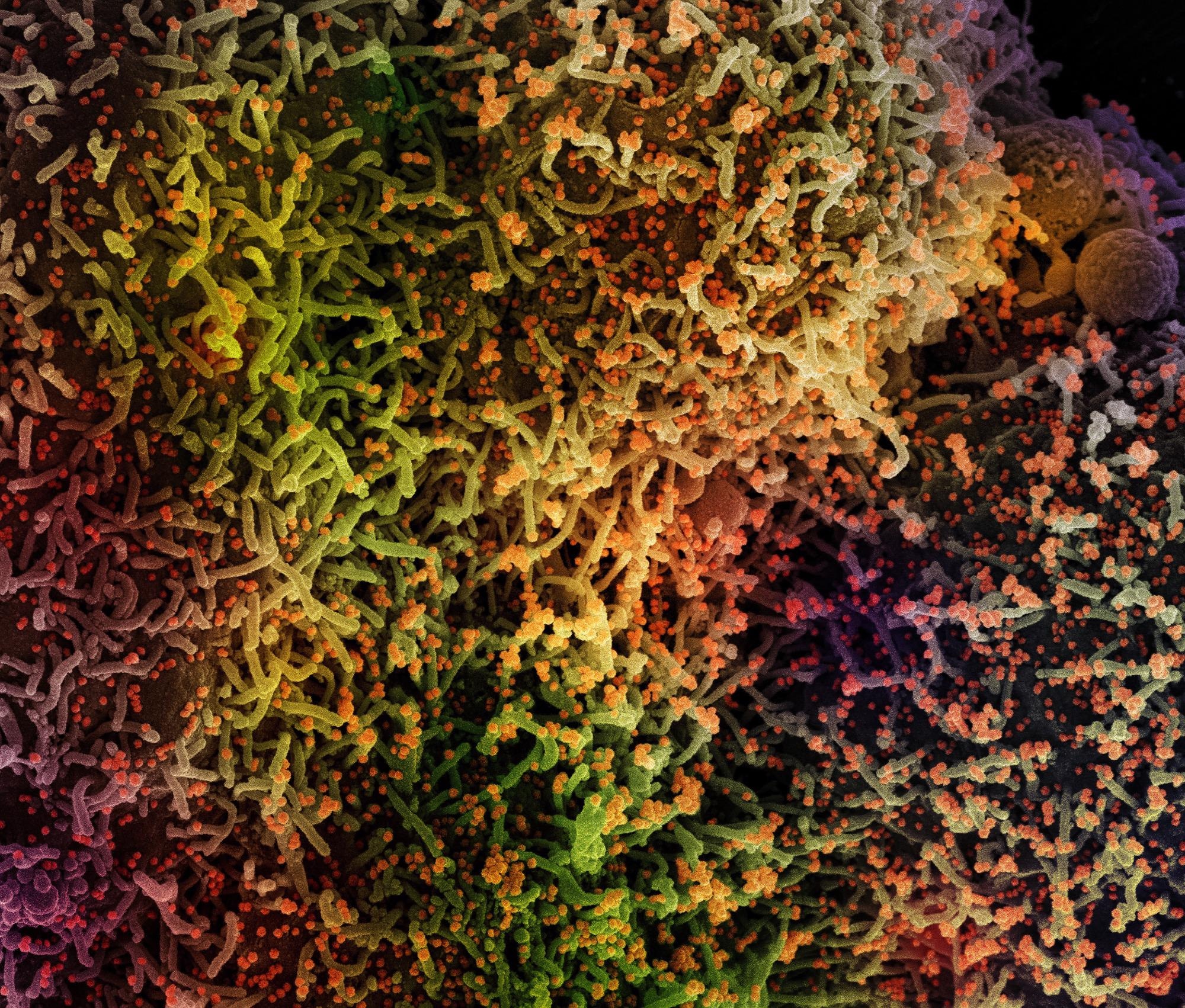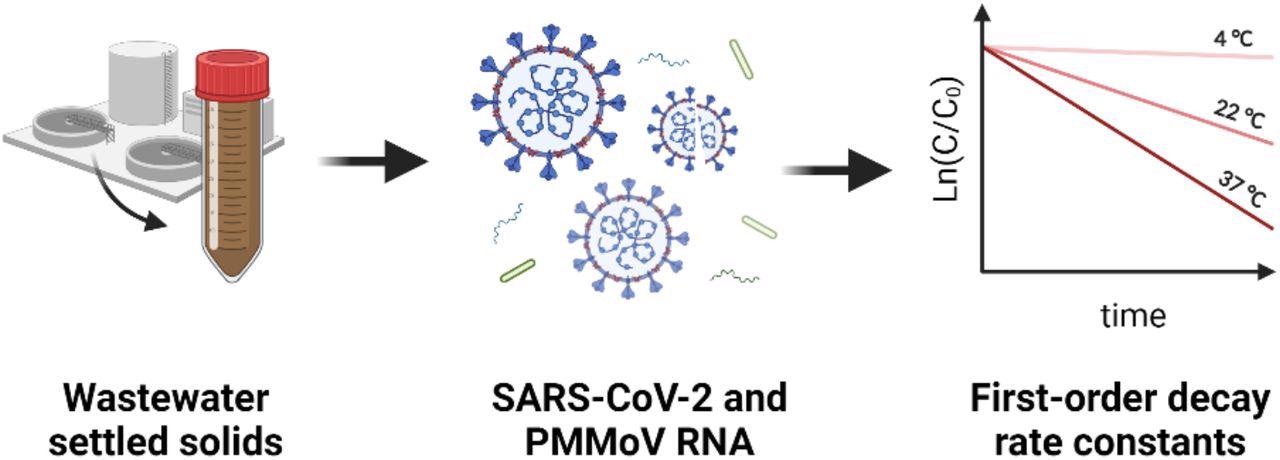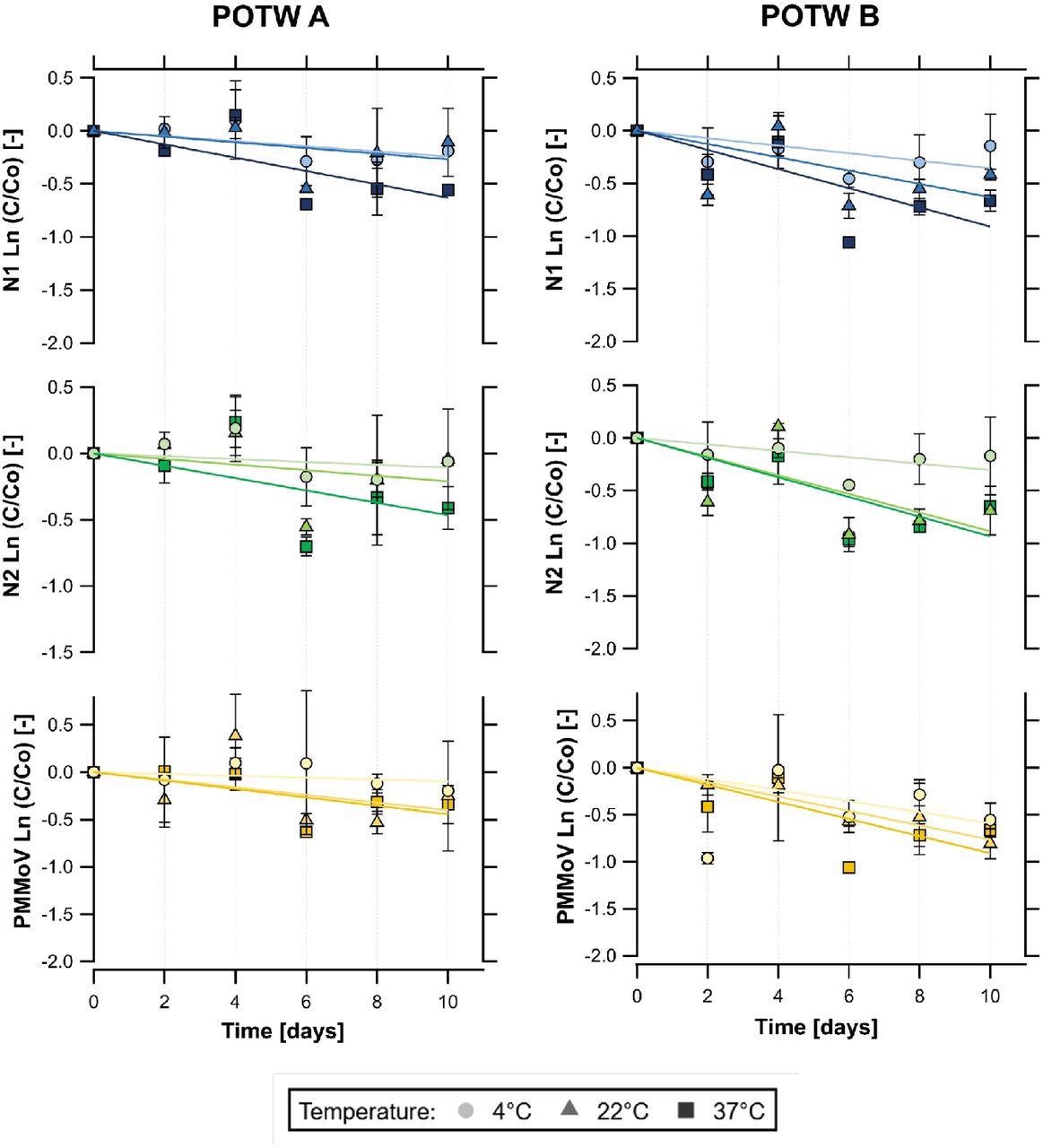A new study from the United States (US) investigates the persistence (lifetime) of viral ribonucleic acid (RNA) under different ambient conditions within wastewater infrastructure to understand how it impacts RNA measurements and the related wastewater epidemiology.
The results showed a limited decay of the endogenous severe acute respiratory syndrome coronavirus 2 (SARS-CoV-2), and pepper mild mottle virus (PMMoV) RNA in wastewater and primary settled solids at the different tested temperatures for 10 days.
While both SARS-CoV-2 and PMMoV RNA are found to be persistent in solids, the current study showed that the SARS-CoV-2 RNA decayed slower in primary settled solids compared to the previously reported decay in wastewater influent. The paper is currently available on the medRxiv* preprint server while it undergoes peer review.
 Study: Persistence of endogenous SARS-CoV-2 and pepper mild mottle virus RNA in wastewater settled solids. Image Credit: NIAID
Study: Persistence of endogenous SARS-CoV-2 and pepper mild mottle virus RNA in wastewater settled solids. Image Credit: NIAID
Introduction
Evidence suggests a significant correlation between the SARS-CoV-2 RNA isolated from primary settled solids samples from wastewater treatment plants and laboratory-confirmed COVID-19 cases. Due to this, the solids are explored for wastewater-based epidemiology.

Data from wastewater-based epidemiology may reflect the true incidence of COVID-19 cases compared to the lab-based results due to other factors such as lack of testing availability, asymptomatic infections, and severity. Many studies have designed models to predict the actual COVID-19 incident cases from wastewater concentrations of SARS-CoV-2 RNA.
However, this is highly challenging as it depends on many parameters that include fecal loads, viral shedding rates, rate of wastewater flow to the treatment plant, decay rate constant and partition coefficient of SARS-CoV-2 RNA, degree of sorption to solids, and the average residence time of wastewater prior to sample collection. While research is underway to improve the models, the decay rate of the RNA is key to the implementation of the method.
In this context, a research group from the US, led by Prof. Alexandria B. Boehm from Stanford University, aimed to document the decay of SARS-CoV-2 RNA in wastewater primary settled solids.
The scientists also measured the decay of the PMMoV RNA since it is in wastewater monitoring programs to normalize SARS-CoV-2 RNA concentrations. The PMMoV is a non-enveloped single-stranded RNA virus, highly abundant in human feces and wastewater. It is also remarkably stable and exhibits no seasonal variation.
Therefore, ‘studying its persistence relative to SARS-CoV-2 targets is important.’ The scientists added that to date, there has been no study reporting the persistence of PMMoV RNA in wastewater or primary settled solids.
Although previous studies have investigated the persistence of endogenous PMMoV RNA in constructed wetlands and found the limited decay at three temperatures (4 °C, 22 °C, and 37 °C) for 21 days, it is found to be highly persistent.
Main findings
In the present study, the scientists measured the first-order decay rate constant of SARS-CoV-2 (N1 and N2 targets) and PMMoV RNA in primary settled solids. They collected the primary settled solids samples from two wastewater treatment plants (1. San José-Santa Clara Regional Wastewater Facility (POTW A) and Sacramento Regional Wastewater Treatment Plant (POTW B)) in the San Francisco Bay Area.

Decay curves of SARS-CoV-2 RNA (N1 and N2) and PMMoV RNA over time (days) in primary settled solids samples stored at 4, 22, and 37 °C. Left column: results from the San José-Santa Clara Regional Wastewater Facility (POTW A). Right column: results from the Sacramento Regional Wastewater Treatment Plant (POTW B). Error bars represent the standard deviation across biological replicates (n = 2).
The collected samples were transported on ice to the laboratory, thoroughly mixed, and aliquoted into subsamples. They were stored at 4°C, 22°C, and 37 °C for 10 days. Then, using an RT-ddPCR (reverse transcriptase digital droplet Polymerase Chain Reaction), the scientists measured the concentration of the SARS-CoV-2 (N1 and N2 targets) and the PMMoV RNA.
They observed limited decay (<1 x log10 reduction over 10 days) in the detection of the viral RNA targets at all the tested temperature conditions. This suggests that the SARS-CoV-2 and the PMMoV RNA can be highly persistent in the solids. Furthermore, the decay rate constants of all RNA targets increased with temperature.
This study reported the first-order decay rate constants that ranged from 0.011 - 0.098 day-1 for SARS-CoV-2 RNA and 0.010 - 0.091 day-1 for PMMoV RNA, depending on temperature conditions. The T90 (the time needed to achieve a 90% reduction in concentration) values for SARS-CoV-2 RNA ranged from 24 - 214 days.
Notably, slower decay was observed for the SARS-CoV-2 RNA in primary settled solids compared to previously reported decay in wastewater influent. The study also observed different decay rates in the two treatment plants from where the samples were collected. This may be explained due to a more significant percentage of solids or a higher concentration of fecal matter or RNA.
However, the factors that influence the decay of the genomic RNA in these environments need to be further investigated,
Conclusion
In conclusion, this study reports that the SARS-CoV-2 and the PMMoV genomic RNA are highly stable in wastewater settled solids over 10 days at several environmentally relevant temperatures. These may be highly persistent in primary settled solids for several weeks and even months. This study suggests limited decay of viral RNAs in the sewer network.
Further, this is the first study that estimates the decay rate of PMMoV RNA in primary settled solids from wastewater sources.
“The k values reported herein will be particularly useful in models that link SARS-CoV-2 RNA in settled solids to COVID-19 incidence rates in sewer sheds, and aid in the interpretation of SARS-CoV-2 RNA concentrations in settled solids for applications in wastewater-based epidemiology,” said the scientists. They call for further research to understand if the solid content and the wastewater characteristics might influence the persistence of viral RNA targets.